In Milan, a New Age of Luminescence Unfolds
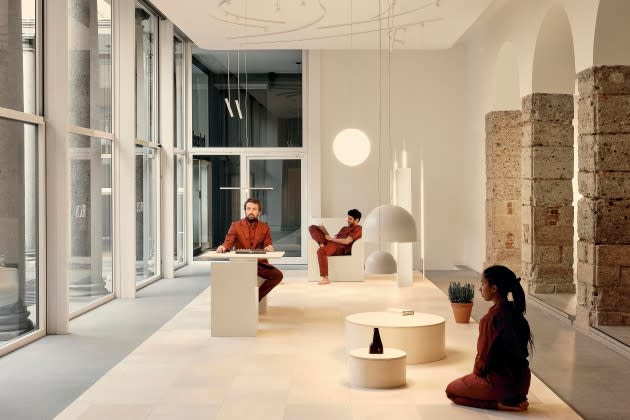
MILAN — “Is that you… the figure swimming inside the orb?” a spectator asked Israeli designer Ron Gilad while sitting side by side, peering at two lonely bulbs within an exhibit hosted by decorative and architectural lighting firm Nemo in Milan’s Borgonuovo19.
“Yes, that’s me,” Gilad responded, grinning, watching a projected image of himself swirl around the lamps’ glow. “You wouldn’t believe how much is going on behind that wall to make this possible,” he enthused.
Last summer, Gilad admitted, he learned to swim for the first time. It all happened on a boat trip with Nemo Lighting owner Federico Palazzari in Portofino for conversation on lighting and functionality, paradox and perception. On the voyage, Gilad was struck by a bout of seasickness. “They told me the only way to cure it was to take a dip in the water and regulate my body temperature. So, I did. Sounds silly to say I learned to swim in Portofino, doesn’t it?” And thus the idea for the “Enlightenment” exhibit was born.
More from WWD
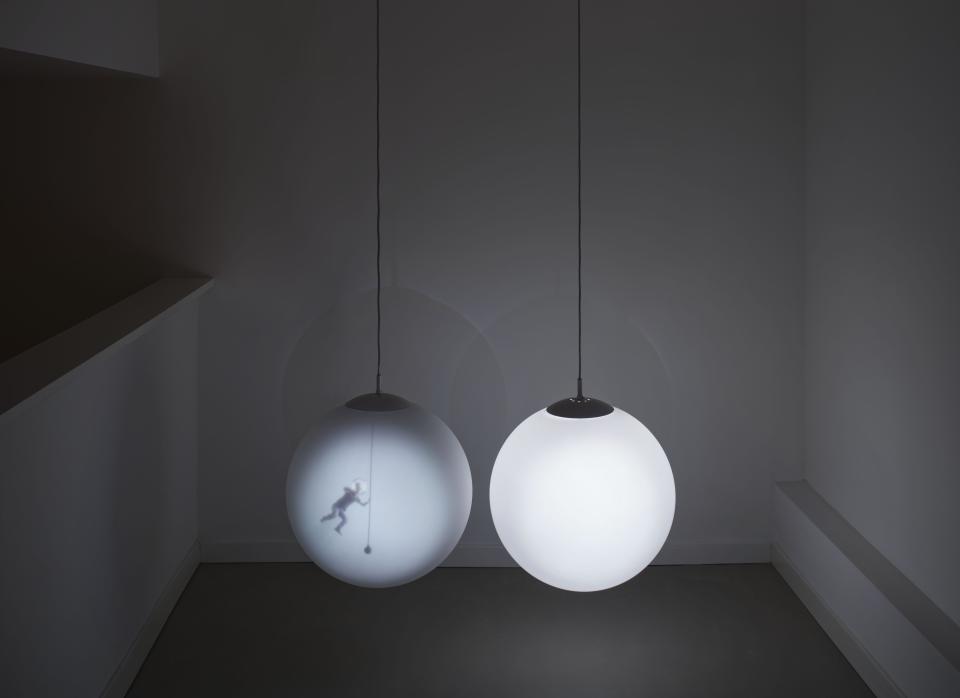
This is the sort of conversation that emerged in and around the biennial international lighting fair Euroluce, which was as much about firsts, emotion and art and as it was about innovation, business and industry. Euroluce, now in its 31st edition, unfolded under the aegis of “The City of Lights” concept. The six-day fair closed here Sunday.
All over Milan’s traffic-laden streets, new experiments in lighting flourished in Fuori Salone’s roster of concurrent exhibitions, like Alcova and Ikea’s “Assembling the Future Together” showcase on Via Tortona. Ikea introduced its Sammanlänkad LED solar-powered lighting, brought to life in partnership with Little Sun, a firm founded by renowned artist Olafur Eliasson and engineer Frederik Ottesen, with the aim of bringing clean and affordable light and energy solutions to communities without access to electricity.
In a soon-to-be demolished office building in Largo Treves, Italian artist Agostino Iacurci presented “Dry Days, Tropical Nights,” a large fluorescent light installation of palm trees and cacti. Iacurci invited the viewer to look at how Earth’s landscape could become and to build a better tomorrow all together.
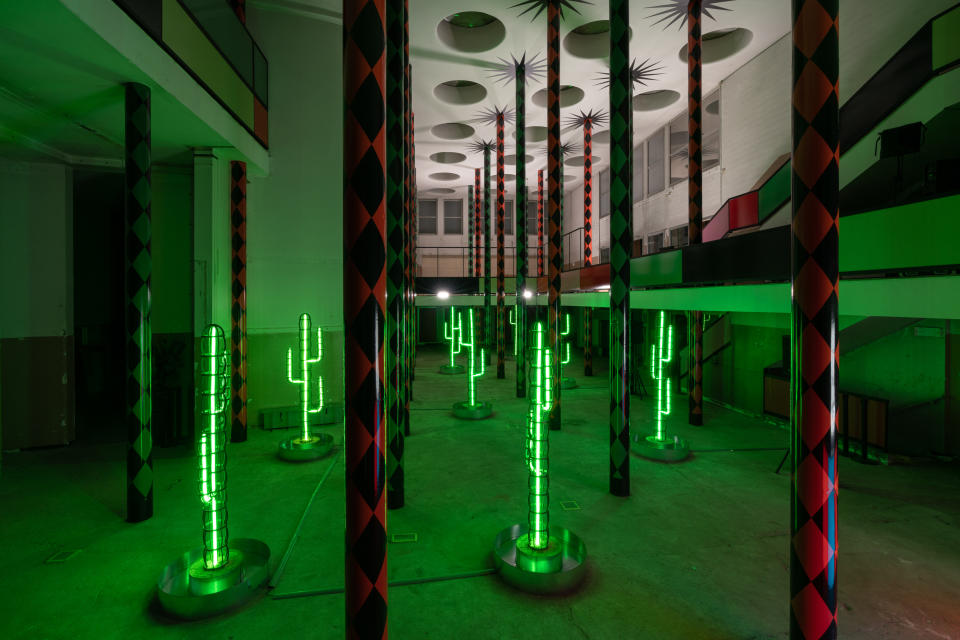
“The project is imagined as a hallucination that dialogs with the architecture of the iconic building designed by Arrigo Arrighetti in the heart of Milan, transforming it into a sort of oasis that is both a sparkling mirage and a disturbing omen of a near future,“ said Iacurci.
Breakthroughs were also evident through designers like Gilad, who has worked with a rota of top Italian brands, from Molteni to Flos, and this time used various techniques — such as reflection, refraction, diffusion, color, sound and video — to push the envelope. “The behavior of light is choreographed and manipulated, questioning the relationship between the light source and the space it occupies,” Gilad explained.
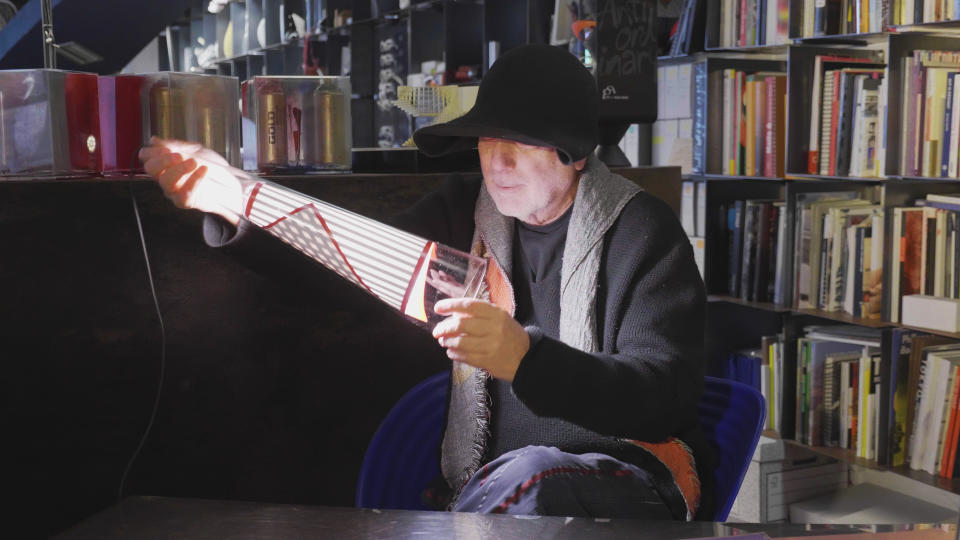
Throughout the city echoes of bygone 20th century masters such as Le Corbusier, Charlotte Perriand and Gio Ponti were seen and heard while new potential icons were made with contemporary architects and designers such as Vincent Van Duysen, Gilad and Ron Arad. Nearby at the showroom of Venice-based design and lighting solutions firm Lodes, a video featuring Arad showed the meticulous process behind his new “Cono di Luce,” or “Cone of Light,” model.
“I think that Italy had an amazing manufacturing and production culture. They understood in Italy where the power is,” said the British-Israeli industrial designer, artist, and architectural designer of his first collaboration with Lodes.
Lodes explained that Arad’s disruptive approach consistently yields new design realms in which an object is broken out of its typical typology. “With this characteristic in mind, Lodes approached the collaboration with the aim to embrace boundary-breaking challenges as part of the design process necessary to create the end product.”
Across town in the 5Vie District, where Leonardo Da Vinci is said to have once worked and lived, The Pool NYC gallery showed off just how versatile the 1,500-year tradition of Venetian glassmaking is. The Translucence-Transparency exhibit was curated by glass and metal expert John Dunbar Roake and directed by photographer Lodovico Colli di Felizzano. Inside the space, a gallerist positioned Viabizzuno spotlights through the vases of Lino Tagliapietra, the Venetian glassmaker considered the world’s greatest master of contemporary glass. Out of the Mediterranean shades of blue and poetic hues conjuring the shores of Murano, a vibrant glow filled an awestruck room.
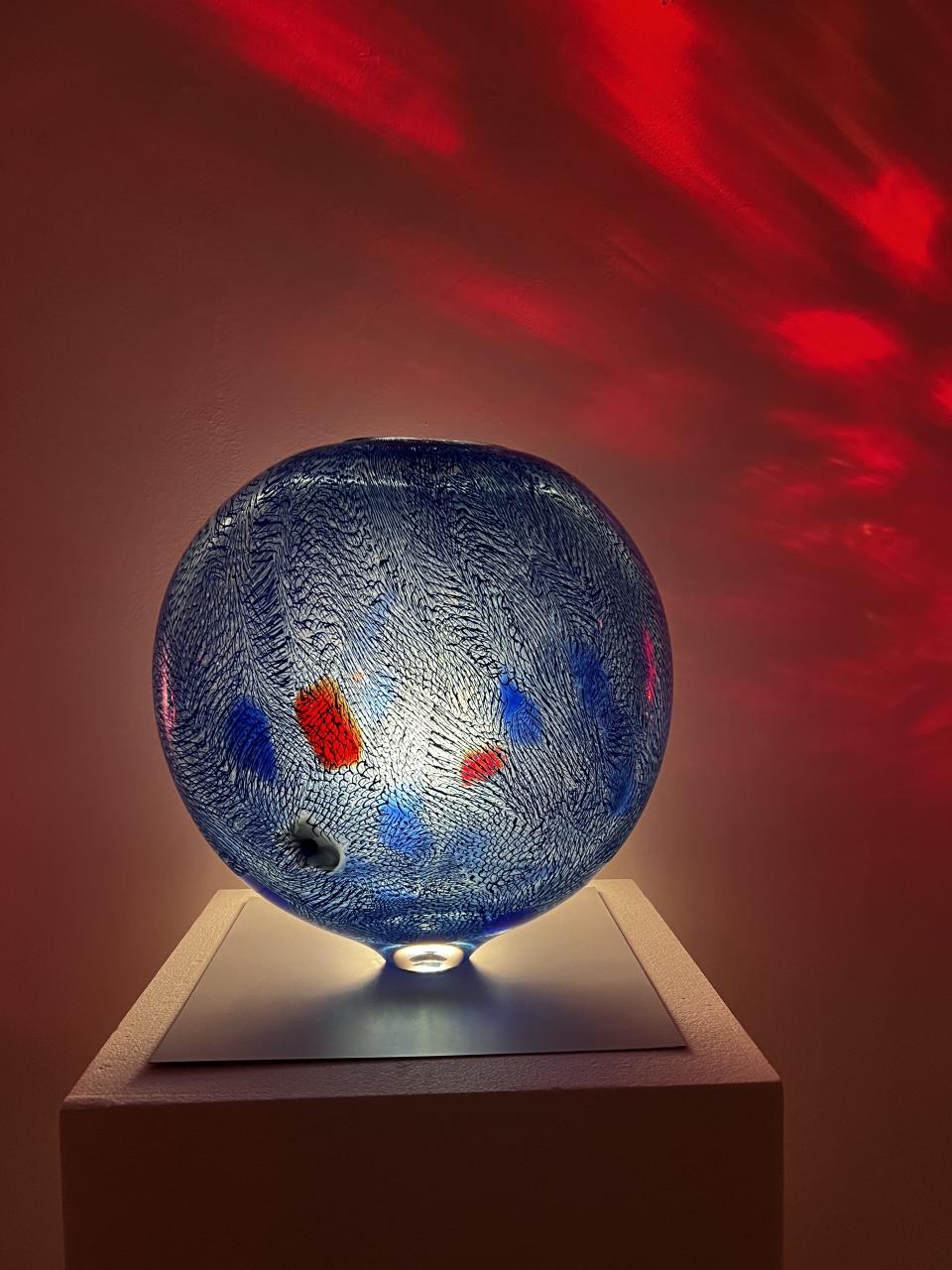
At the Flos showroom in Corso Monforte, Milan, there was a special installation and performance in six acts staged by theater and opera set designer and director Fabio Cherstich. Performers dressed in basic maroon played chess and stretched, acting out vignettes of everyday life. Actors gazed up and around the My Circuit flexible track system by Michael Anastassiades, the Cypriot-born, London-based designer whose usual practice encompasses product, spatial interventions, and experimental works.
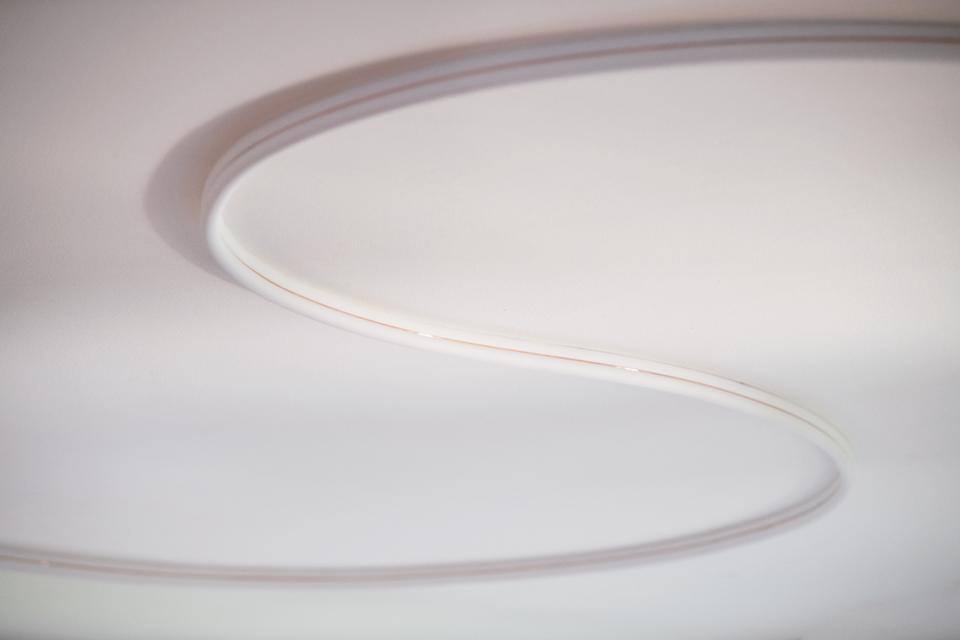
“I am also very proud of what Flos represents today: an extraordinary blend of authentic design, technological innovation, and an eco-sustainable approach to lighting design. This is what we want to communicate to the Euroluce public, speaking a transversal language that unites both the decorative and technical worlds,” Flos chief executive officer Roberta Silva said in a statement.
At Milan’s Salone del Mobile trade show, FontanaArte’s latest collection unfurled in a domestic setting, also highlighting the power of outdoor lighting with a complete collection of outdoor illumination including Uovo (egg) by Ben Swildens, Artico by Gabriele and Oscar Buratti, as well as a re-edition of the Naska table lamp and Oort by Jacopo Roda.
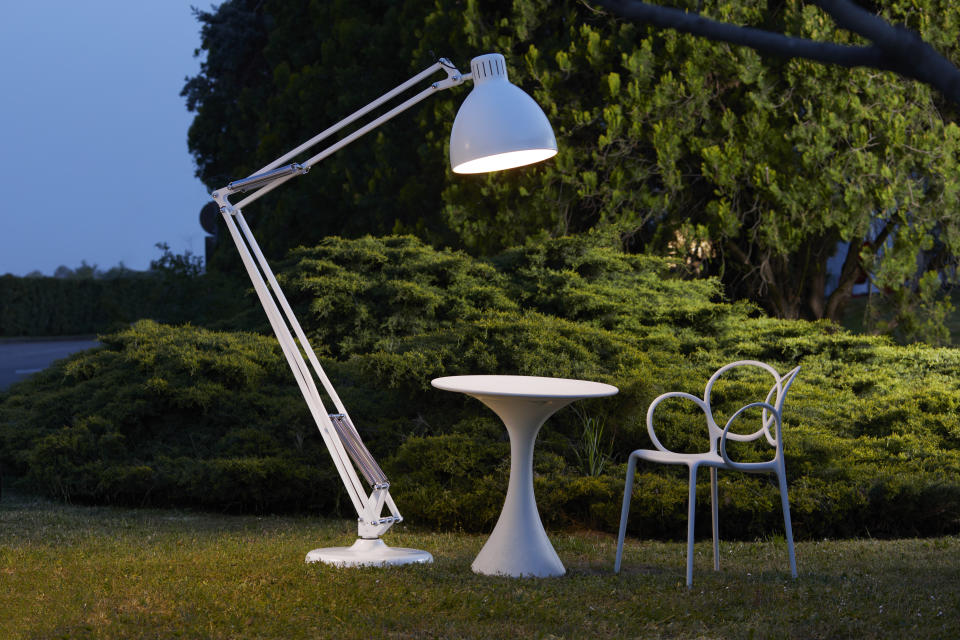
Fendi Casa’s collection also expanded with a new lighting offer through a collaboration with Louis Poulsen, which included the famed Artichoke lamp — this time in a yellow glass version, Fendi’s signature color.
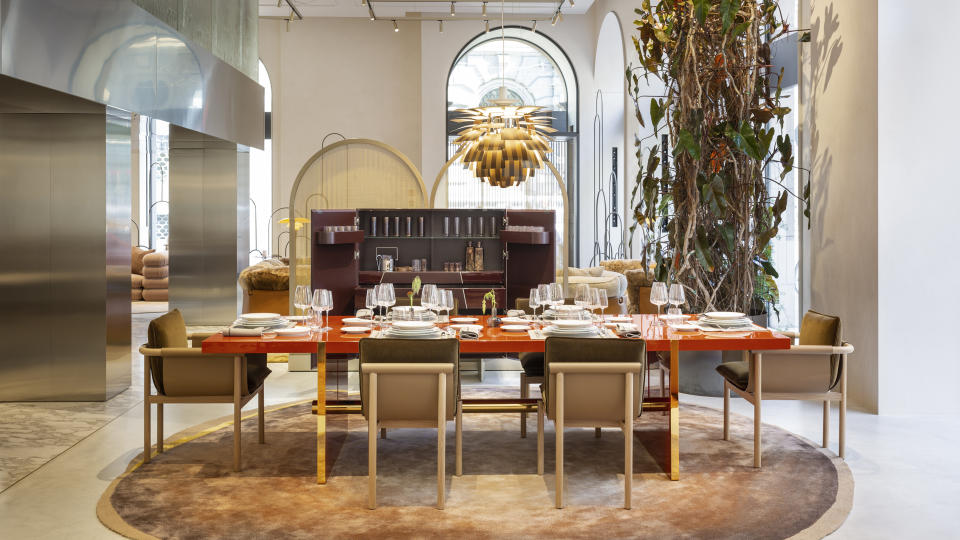
Cassina showed off its expanded vision of the home with a new lighting collection that unifies works by Tobia Scarpa and Philippe Starck, Linde Freya Tangelder and Paolo Ulian in a collection dubbed “The Cassina Perspective.” Inspired by the work of Charles and Ray Eames, who invented the Galaxy lamp first shown at Detroit’s “An Exhibition for Modern Living” in 1949, the Eames Lighting Collection by Cassina will be launched in 2024, in partnership with the Eames Office, the company said.
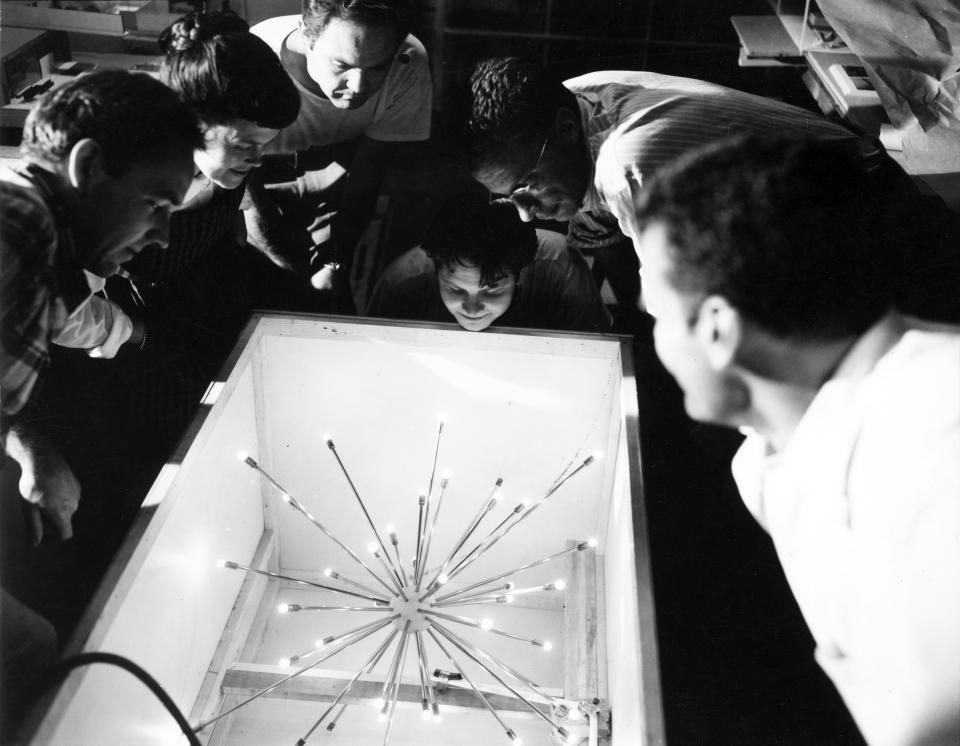
In more intimate settings around town, niche brands and budding creatives showcased their latest, inspired by basic materials and calming designs.
Milan Design Week newcomer Georges, a niche design brand founded in 2010 by Mylène Niedzialkowski, presented Saïto, an exclusive collection inspired by the works of the famous Japanese artist Kiyoshi Saito, who is known for his realist, folkloric works.
In a small Brera apartment, away from the sound of the honking taxis and the loud crowds, Georges unveiled Céleste, a silk and wood frame floor lamp with a spherical aluminum base. Going forward, each piece will be signed and numbered and made to order.
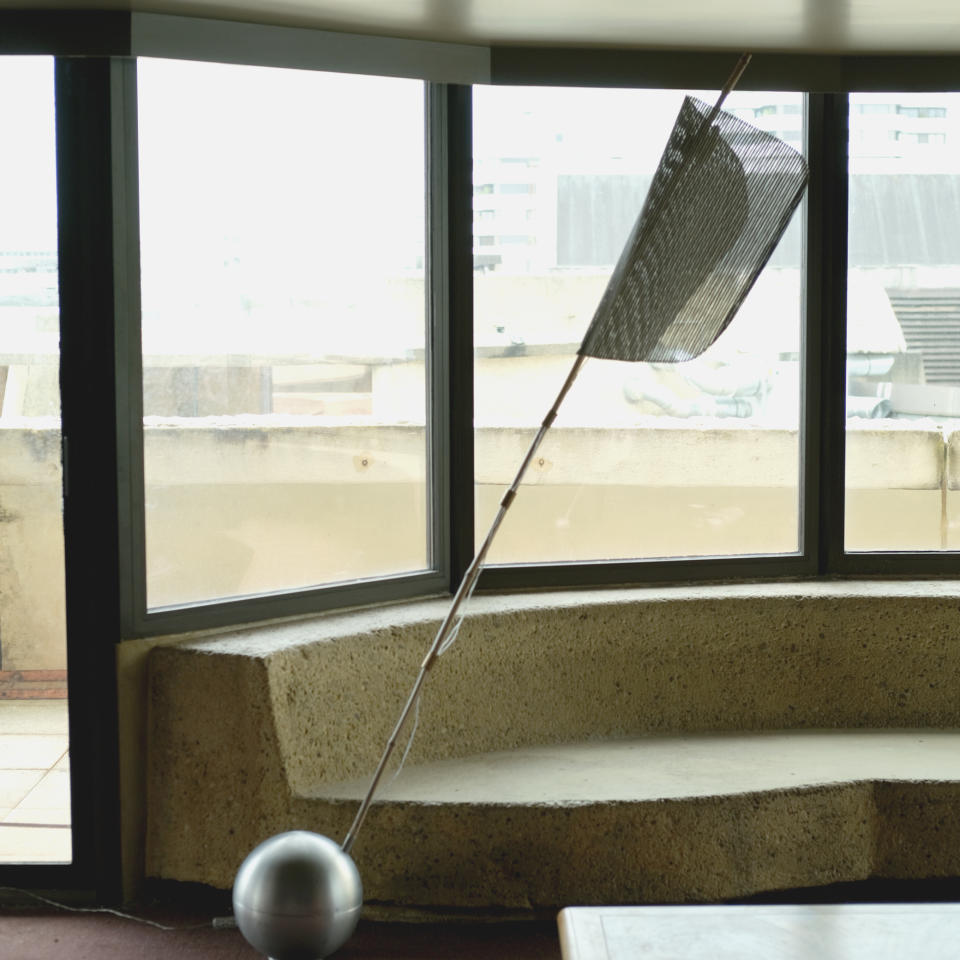
In and around the fair, executives, buyers, architects and designers alike agreed that by category and across the board, living and bedroom lighting are fueling the design sector’s growth, driven by new consumer trends influenced by pandemic and post-pandemic life.
In Bain & Co’s last report published in 2022, the firm said sales are expected to increase to 50 billion euros to 60 billion euros by 2026 from 40 billion euros recorded in 2021, with the living and bedroom and lighting categories expected to maintain positive momentum.
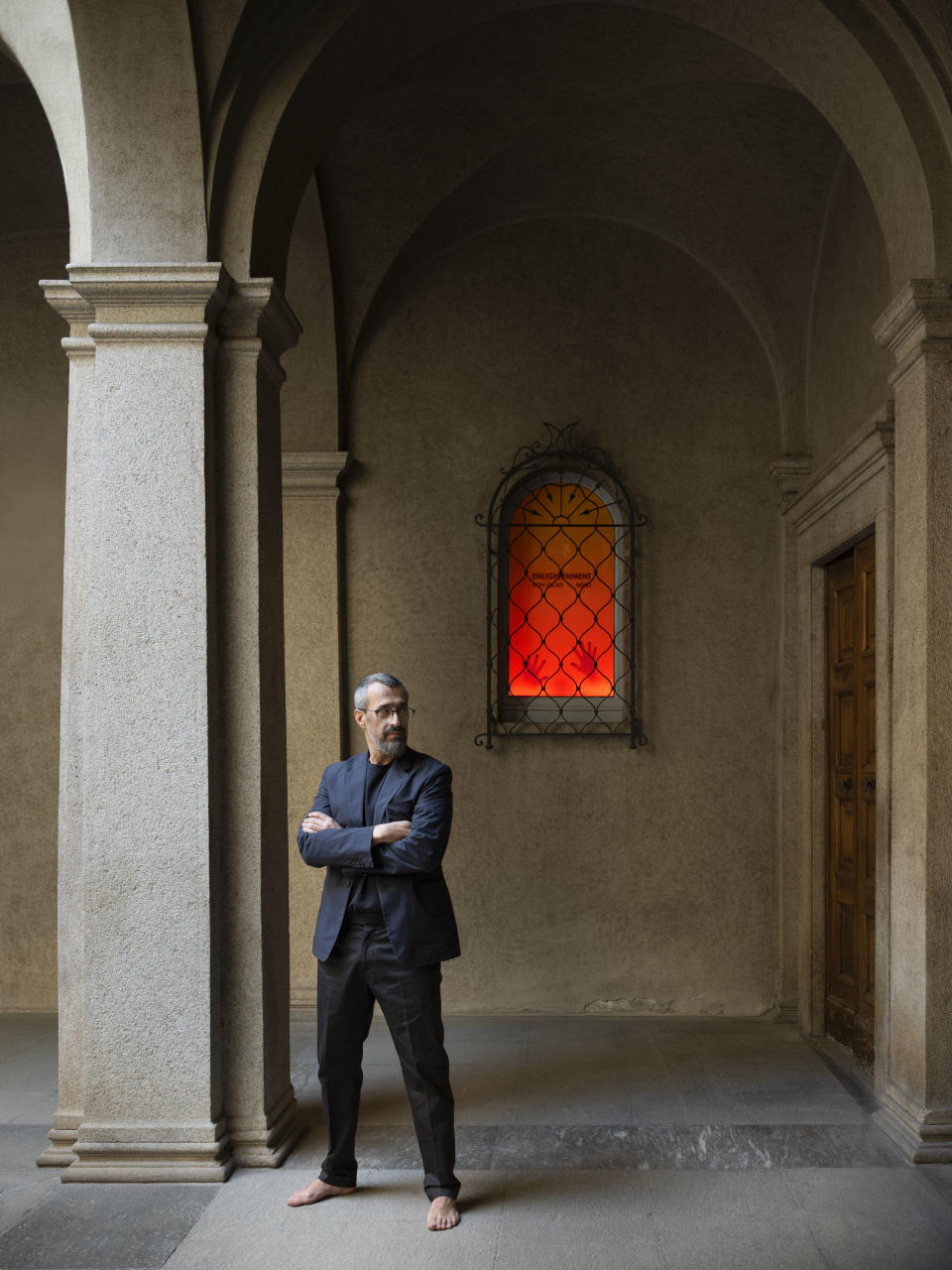
Best of WWD

